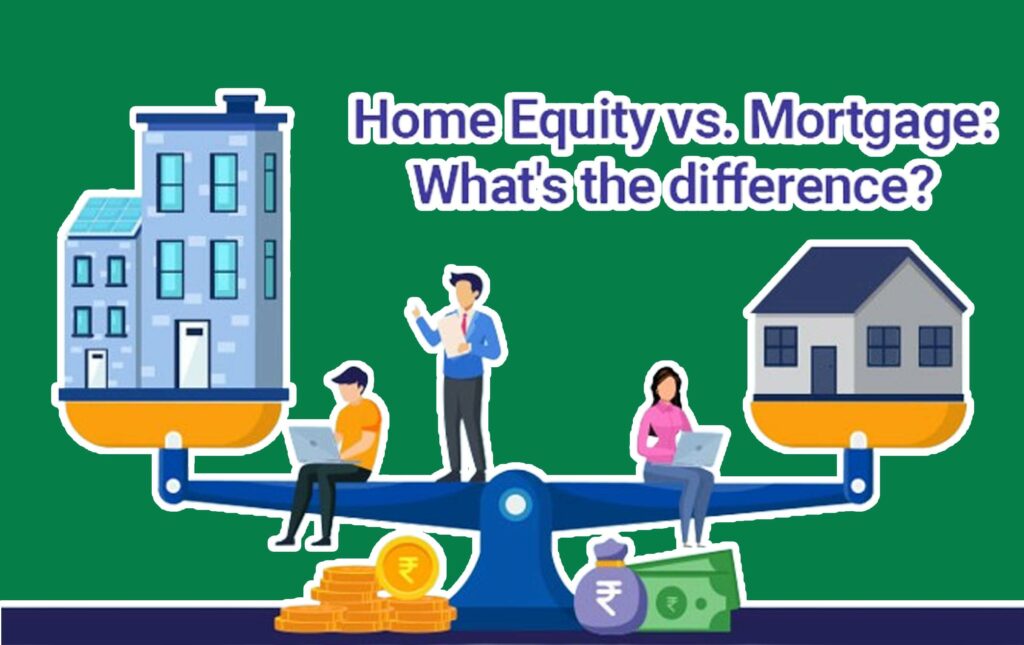Home Equity Loan vs. Mortgage – When people talk about using their home to access financing, two terms frequently arise: a mortgage and a home equity loan. While both are types of secured debt tied to your property, they serve fundamentally different purposes in a homeowner’s financial life.

A traditional mortgage is typically used to purchase a home, while a home equity loan is used to borrow against the home’s accrued value. Understanding the core distinctions, as well as the risks and benefits of each, is essential for making smart financial decisions about your largest asset.
What is Mortgage?
A mortgage, often referred to as a home loan, is the most common. And recognizable form of debt associated with homeownership. Its primary purpose is to finance the initial purchase of a residential property. The home itself serves as collateral, meaning the lender places a legal right, or a first lien, on the property until the loan is fully repaid.
Mortgages are structured to cover the vast majority of the home’s purchase price. It typically have long repayment terms, such as 15 or 30 years, with either fixed or adjustable interest rates. Every monthly payment comprises both principal (the amount borrowed) and interest. As a borrower diligently makes these payments, the principal balance decreases. And their ownership stake, known as “equity,” steadily increases over time.
What is Home Equity Loan?
A home equity loan, often called a “second mortgage,” is a way to borrow money using the equity you have built up in your home as collateral. The primary purpose of this loan is to access a lump sum of cash for large expenses, such as major home renovations, college tuition, or debt consolidation.
Like a mortgage, a home equity loan is secured debt, but the lender places a second lien on your property, making their claim subordinate to the original mortgage. The amount you can borrow is directly related to your existing equity; lenders calculate this by taking a percentage (often 80% to 90%) of your home’s total value. And subtracting the balance you still owe on your first mortgage. Crucially, when the loan closes, you receive the full approved amount in a single lump sum payout. These loans usually come with fixed interest rates and shorter repayment terms, typically ranging from 5 to 20 years, resulting in a consistent monthly payment throughout the loan’s life.
Key Differences: Mortgage vs. Home Equity Loan
| Feature | Primary Mortgage | Home Equity Loan |
| Loan Purpose | To buy the home. | To borrow against the home’s existing value (equity). |
| Lien Position | First lien on the property. | Second (or subsequent) lien on the property. |
| Payout Structure | Funds are disbursed to the seller/title company at closing. | Funds are paid to the borrower in a single lump sum. |
| Amount Determined By | The home’s purchase price and down payment. | The home’s current market value and the amount of equity built up. |
| Typical Term | Long-term (15 or 30 years). | Shorter-term (usually 5 to 20 years). |
| Risk to Borrower | Loss of primary residence if payments are missed. | Loss of primary residence if payments are missed, in addition to the existing mortgage risk. |
Important Risk Consideration
It is crucial to remember that a home equity loan is a second mortgage. Because the home is collateral for both debts, defaulting on either the primary mortgage or the home equity loan can result in foreclosure.
In the event of a foreclosure, the primary mortgage lender (holding the first lien) is paid back first. Only if funds remain will the home equity loan lender (holding the second lien) be paid. This is why second mortgages often have slightly higher interest rates than primary mortgages, as they carry a greater risk for the lender.
Conclusion
A mortgage and a home equity loan are powerful financial tools, but they are not interchangeable. The traditional mortgage facilitates the dream of homeownership. While the home equity loan allows you to responsibly leverage the wealth you have built within that home.
Before choosing to use either, homeowners must carefully evaluate their financial capacity, their need for a lump sum, and the security of their income. Understanding the unique structure, repayment terms, and risk profile of each option is the first step toward using your home’s value to meet your broader financial goals.



